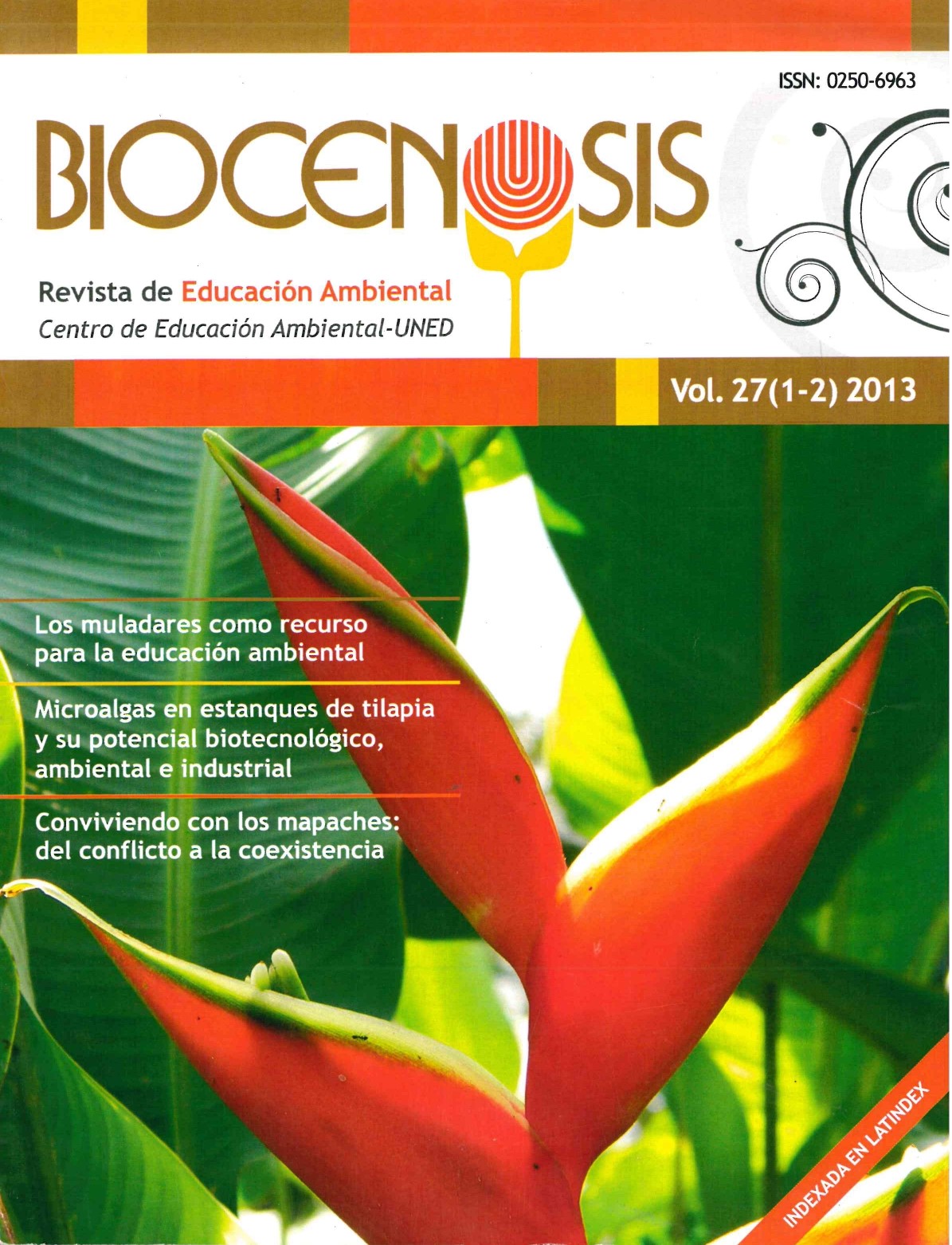Perception and popular knowledge about crocodiles (Crocodylus acutus) in the surroundings areas of the Tempisque river, Costa Rica
Keywords:
Reptiles, Hunting, Human–crocodile relationship, Environmental Education, GuanacasteAbstract
The study was conducted in the communities of Rosario, Puerto Humo, Pozo de Agua and Corral de Piedra, adjacent to the western margin of Tempisque river, in order to determine what is the popular perception and knowledge of the inhabitants of these four villages with respect to the presence of crocodiles (C. acutus). 33 surveys were conducted between January and February 2010. The interviewees responded that crocodiles feed on fish (87,87%) and small mammals (72,7%), 81,8% do not know how is the courtship in this species; 57,5% do not know when is their reproductive time. They believe nests are in caves (39,3%), out of water (48,5%) or that are holes (39,3%). The residents of these villages know that the river has crocodiles (75,75%), believe that this population has increased in recent years (93,9%). They also believe that crocodiles are dangerous and a threat to people (87,9%) and that species is not considered endangered (87,9%). In turn, they think that a crocodile can attack anytime and attacks have remained the same for several years (51,5%). They propose that attacks on humans have occurred because they invade the habitat of the animal (48,5%). As a conclusion, the author proposes a process of continuing education in the communities that share ecosystems with wildlife, as this knowledge will be key to their overall development and of the species that coexist with them.
References
Barrantes, L. (2008). Determinación de la variabilidad genética y flujo genético entre poblaciones de cocodrilo (Crocodylus acutus) de los ríos Tempisque, Tárcoles y el complejo Térraba-Sierpe, con mención especial a la condición de la población del Tempisque. Tesis para optar por el grado de maestría en Conservación y Manejo de Vida Silvestre. ICOMVIS-UNA.
Jiménez, J., Calvo, J., Pizarro, F. y González, E. (2005). Conceptualización de caudal ambiental en Costa Rica: Determinación inicial para el Río Tempisque. Organización para Estudios Tropicales. San José, C.R.: UICN, Área Temática de Humedales, Agua y Zonas Costeras.
Fonseca, A. (2008). Decimocuarto Informe del Estado de la Nación en Desarrollo Humano Sostenible. Capítulo 4: Armonía con la naturaleza. La zona marino costera. San José, Costa Rica.
Hernández, J. (2007). Convivir con nuestros cocodrilos. Ambientico, Nº 166 11-13.
Sánchez, J. (2001). Estado de la población de cocodrilos (Crocodylus acutus) en el Río Tempisque, Guanacaste, Costa Rica. Informe Final. Recuperado de http:// www.inbio.ac.cr/es/estudios/PDF/informe_Cocodrilos.pdf.
UNESCO-PNUMA. (1997). Programa Internacional de Educación Ambiental. Centro Internacional de Educación para la Conservación. 102 pp.
Villegas, A, & Schmitter, J. (2008). Feeding habits of the american crocodile, Crocodylus acutus (Cuvier, 1807) (Reptilia: Crocodylidae) in the southern coast of Quintana Roo, México Acta Zoológica Mexicana (nueva serie), 24 (3): 117-124.
